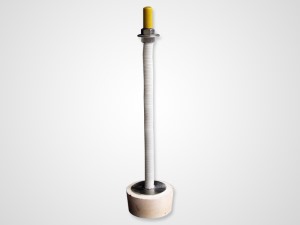What are the characteristics of the application of refractory bricks
The role of refractory bricks in our actual application is very great. In our use of refractory bricks, what are the characteristics of the use of refractory bricks? Xiaobian will lead you to understand what characteristics should be possessed by the application of refractory bricks.
①It can resist the effect of high temperature heat load, does not soften or melt. The refractoriness of refractory bricks is required to be quite high.
②It can resist the effect of high temperature heat load, no volume shrinkage and only uniform expansion. The refractory bricks are required to have high volume stability, the residual shrinkage and residual expansion should be small, and there is no crystal transformation and serious volume effect.
③ It can resist the combined action of high temperature thermal load and heavy load, without losing strength, without changing and collapsing. Refractory bricks are required to have relatively high normal temperature strength and high temperature thermal strength, high load softening temperature, and high creep resistance.
④It can resist the influence of rapid temperature changes or uneven heating, no cracking, no peeling. It is required that the refractory bricks have good thermal shock resistance. Refractory bricks have good slag resistance. ⑥It can resist the scouring, impact and wear of flame and charge and dust, and the surface is not lost. Refractory bricks are required to have high compactness and wear resistance at room temperature and high temperature.
⑦Resistant to the influence of high temperature vacuum operation and atmosphere changes, no volatilization, no damage. Refractory bricks are required to have low vapor pressure and high chemical stability. Transportation, construction and maintenance, etc.
⑨ For refractory bricks with special requirements, their thermal conductivity, electrical conductivity and gas adaptability should also be considered.
Therefore, for refractory bricks, it is very important to have these characteristics, which can enable us to better apply refractory bricks to meet the needs of our application.

Previous: Teach you how to improve the temperature resistance of the intermediate frequency furnace lining
下一条: What are the advantages and disadvantages of refractory ramming material?
Related Industry Knowledge
- Features and Benefits of Coil Clay
- What are the advantages of a good furnace lining
- Misunderstandings in the use of ramming materials in intermediate frequency furnaces
- Phenomenon analysis of failure of argon blowing of ladle permeable bricks and how to improve the rate of argon blowing
- Where is the consumption reduction and energy saving of breathable bricks reflected?
- How to improve the service life of intermediate frequency furnace lining
- Reasons for damage to intermediate frequency furnace lining and how to solve them
- The performance and advantages of breathable brick
- Analysis of Structural Characteristics of Dispersive Breathable Bricks
- The intermediate frequency furnace charge knotting process needs to pay attention to details sharing
- Teach you how to improve the temperature resistance of the intermediate frequency furnace lining
- What are the types of ladle breathable bricks?
- Main components of refractory materials such as breathable bricks, nozzle block bricks, castables, etc.
- What should I do if there are cracks in the ramming material of the intermediate frequency furnace?
- What is the function of ladle blowing argon stirring?
- Extensive use of ladle breathable bricks
- How to reduce nitrogen content in steel during intermediate frequency induction furnace smelting
- Main components of refractory materials such as breathable bricks, nozzle block bricks, castables, etc.
- Iron hook ramming material and castable for blast furnace
- What is the difference between stainless steel pipes produced by refining furnaces and intermediate frequency furnaces?


